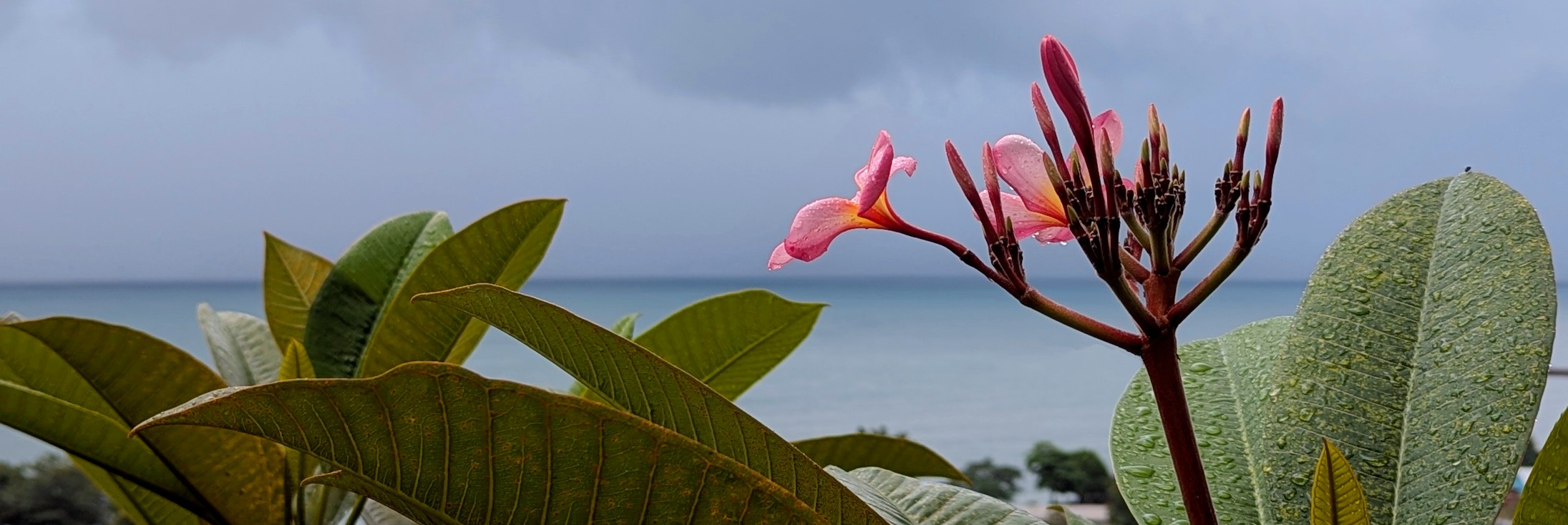
solomon islands
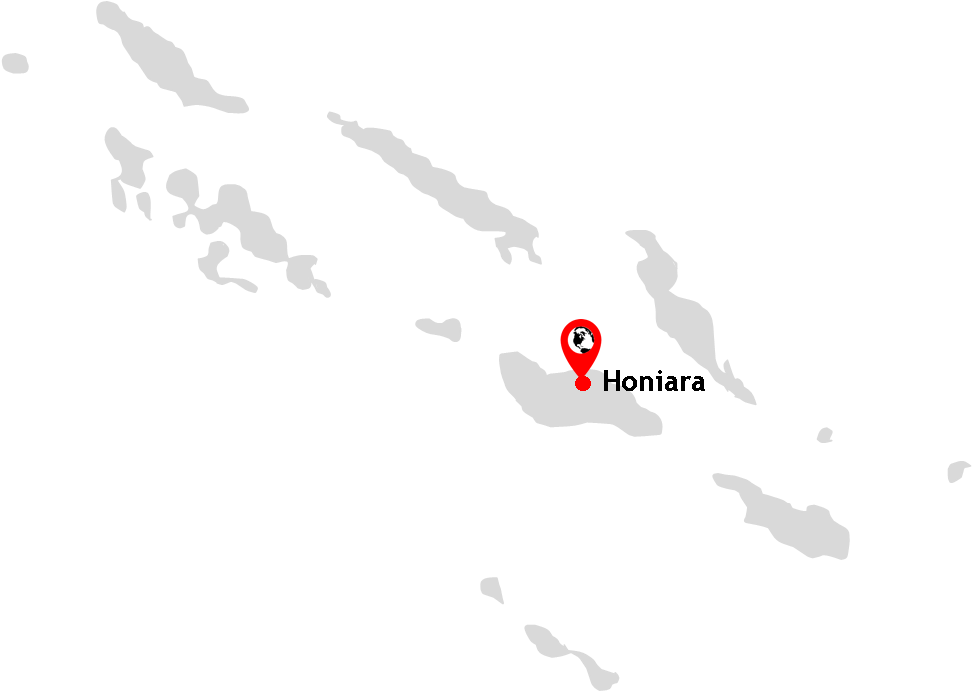
Where: Honiara, Solomon Islands. Oceania.
When: April 2025
What: Panatina Ridge, Iron Bottom Sound, Honiara Central Market, Hibiscus blooms, MV Yandina shipwreck.
How: Domestic flight, international flight, public bus, taxi, walking.
Country counter: No.98
Illnesses or mishaps: Trying to fit my exploring of the Solomon Islander capital in between tempestuous tropical storms and some of the most oppressive humidity I have ever experienced.
The Solomon Islands, a South Pacific nation of nearly two hundred islands and equidistant between Vanuatu and Papua New Guinea, may sound innocuous enough. Perhaps the mere mention of the Solomon Islands fails to conjure up in the mind anything whatsoever. Your mind is perhaps left in a liminal predicament searching for a hook upon which to hang a fragment of knowledge - a landmark, event or symbol. It is fair to say that the Solomon Islands are mysterious, enigmatic and something of a traveller blind spot. Indeed, a visit to the Solomons, whether you travel around the islands or just stay in the capital Honiara as I did, is a visit to a relatively off the beaten track kind of place. As if to underscore this fact, the flight I took from Brisbane in Australia to Honiara, the Solomon Islander capital, was less than half full. In an age of hyper-tourism, the Solomon Islands offers the increasingly rare and tantalising chance to wander around a country and feel like you're the only traveller there - chances are you probably will be. A trip here is an opportunity to feel adventurous and intrepid by heading to a country seemingly condemned to fall between the Oceanic cracks of its more famous Pacific neighbours such as Fiji, Tonga - even Samoa. I have seen some of the world's most famous landmarks - from the Pyramids of Giza in Egypt to the Great Wall of China, from the Taj Mahal in India to Saint Basil's Cathedral in Russia - but, as I evolve as a traveller, I am increasingly of the view that a country doesn't have to have internationally renowned sights to be a meaningful destination. I've also moved away from the pressure cooker approach to travel which reduces travel to an urgent tick-list. It's the kind of mentality created by "Top ten things to see in..." and "Must do when you're in..." travel blogs and articles. Nowadays, I delight in simply just being in a new place surrounded by its noise, its smells, its culture and its unfamiliar faces.
And so, driven by an insatiable wanderlust to see the world, to experience places I've never been before and to quench my curiosity for the unknown, I journeyed to the land of the Solomon Islanders. The Solomon Islands, self-billed as the 'Happy Isles', was my 98th country and only the second time I have travelled solo on the continent of Oceania.
I based myself in a small apartment in east Honiara up on a hill ridge overlooking the wonderfully-named Iron Bottom Sound with the dark blues of Tulagi Island gracing the horizon. I tentatively got my bearings, heading down dusty tracks populated by stray dogs, lined with hibiscus flowers and palm trees and dotted with the odd kerbside stall selling melons and bananas. It was from one of these stalls that I engaged my first smiling local who sold me a bunch of Baby Bananas for $10 Solomon Islander Dollars. I'd learnt from my recent experience in Samoa that such bananas are only ever sold in large bunches. I therefore walked away with around twenty miniature bananas - my travel snack of choice and an almost obligatory purchase when journeying in the South Pacific.
My April visit was just at the end of the wet season and, as expected, Honiara oscillated between unbearable humidity and torrential stormy downpours. Either way, I would arrive back at my apartment soaking - whether from sweat or rain, ultimately, it made no difference. One morning I decided to put my usual caution to one side and flagged down a passing public bus. Buses in the Solomon Islands almost always come in the form of white minivans with sliding doors. A card lying on the dashboard details the destination. After the briefest of exchanges to confirm the price (set at $3 for all journeys no matter where you board), I hopped on and, in doing so, joined local Solomon Islanders on their trip to Honiara Central Market - the pounding heart of the capital. The Honiara traffic ensured that the relatively short distance of six kilometres took well over half an hour, during which not a soul spoke on the bus. Even the payment of the fare by those boarding the bus along the route took place in complete silence, with taps on shoulders and Solomon Islander Dollars being passed back and forth with eye contact an optional extra. Solomon Islanders have devised a mode of transportation that operates almost entirely without voice.
There's no better place to feel the pulse of life in the South Pacific than at a marketplace. Weird and wonderful fresh produce was neatly and thoughtfully arranged on tables and wrapped in palm leaves, proffered for sale by some of the most characterful and beautiful faces I've ever seen. My wandering around the market was punctuated by good mornings, hellos and quizzical looks at every turn. It was impossible for me not to draw attention to myself by virtue of the fact that I was the only foreigner in the market, the only white face immersed in a sea of Melanesian smiles. It was a raw and authentic experience that can only be had in a country that is still off the beaten track.
I enjoyed a few coffees and banana breads in a coffee shop a short walk down a steep, dusty track pockmarked by giant pot holes and strewn rubbish. Prices were exorbitant but it was something of an expat hangout and the staff were friendly enough. This was to be the only place where I ate out during my stay; I'd determined that, seeing as my apartment came with cooking facilities, this was going to be a self-catering trip. I made do with the food I had managed to bring with me from Australia and topped this up with daily purchases from a nearby supermarket. The benefits of cooking my own food were two-fold: not only was it more economical but it also meant I could ensure I ate healthily and safely while on the island. On arrival in Honiara I was sure glad of this prescient decision; as my taxi pressed through the city's darkened streets from the airport, westward towards Panatina Ridge, a scene of poverty played out. It is a familiar scene and one which I have witnessed up close many times all over the world. Roadside shacks, broken roads, stray dogs and filthy litter in burning piles were the defining hallmarks of life in the Solomons. I struggled to conceive that there would be a single eatery I could patron amid such scenes. Indeed, this would be a disingenuous Chronicle if I were not to make at least some reference to the poverty which will ultimately impinge itself on your experience of this, the 'Happy Isles'. At any one time it will make a grab for your empathy, churn your stomach in revulsion or give you pangs of trepidation as you pass by yet another particularly desperate-looking person. There will be people whose homes are bus stops. There will be dead dogs bloated and rotting in the midday sun by the side of the road. There will be a stinky assault on your olfactory senses, a combination of petrol fumes, nearby bonfires and rotting organic matter.
And yet, amid all this, people smile. People welcome. People wave. People even whistle from across the road so that they can give you the 'rock out' gesture with their left hand. People will look so glad that you came. I'm glad I went.
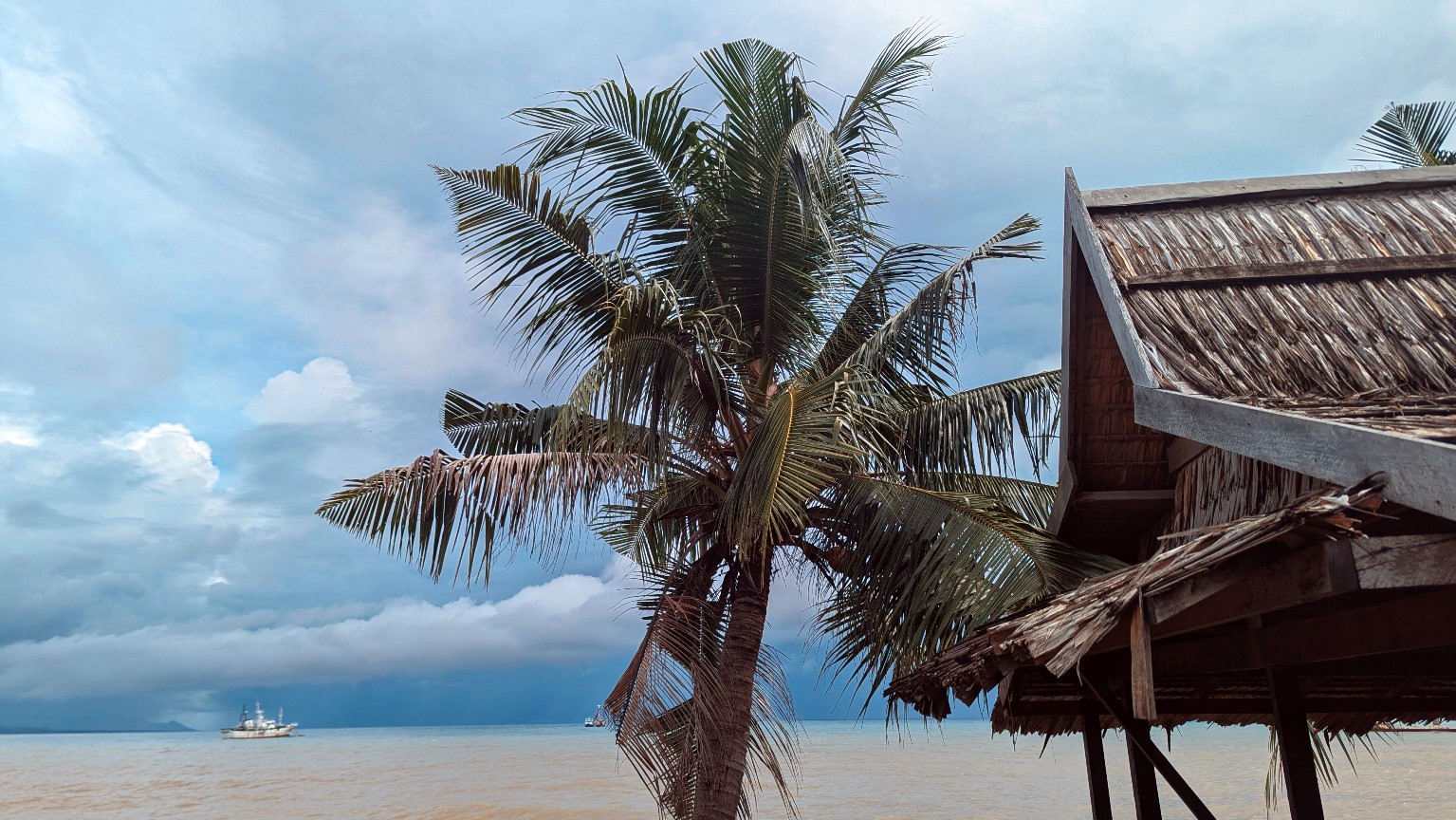
The view out across Iron Bottom Sound foregrounded by a local eatery shack made of palm leaves.
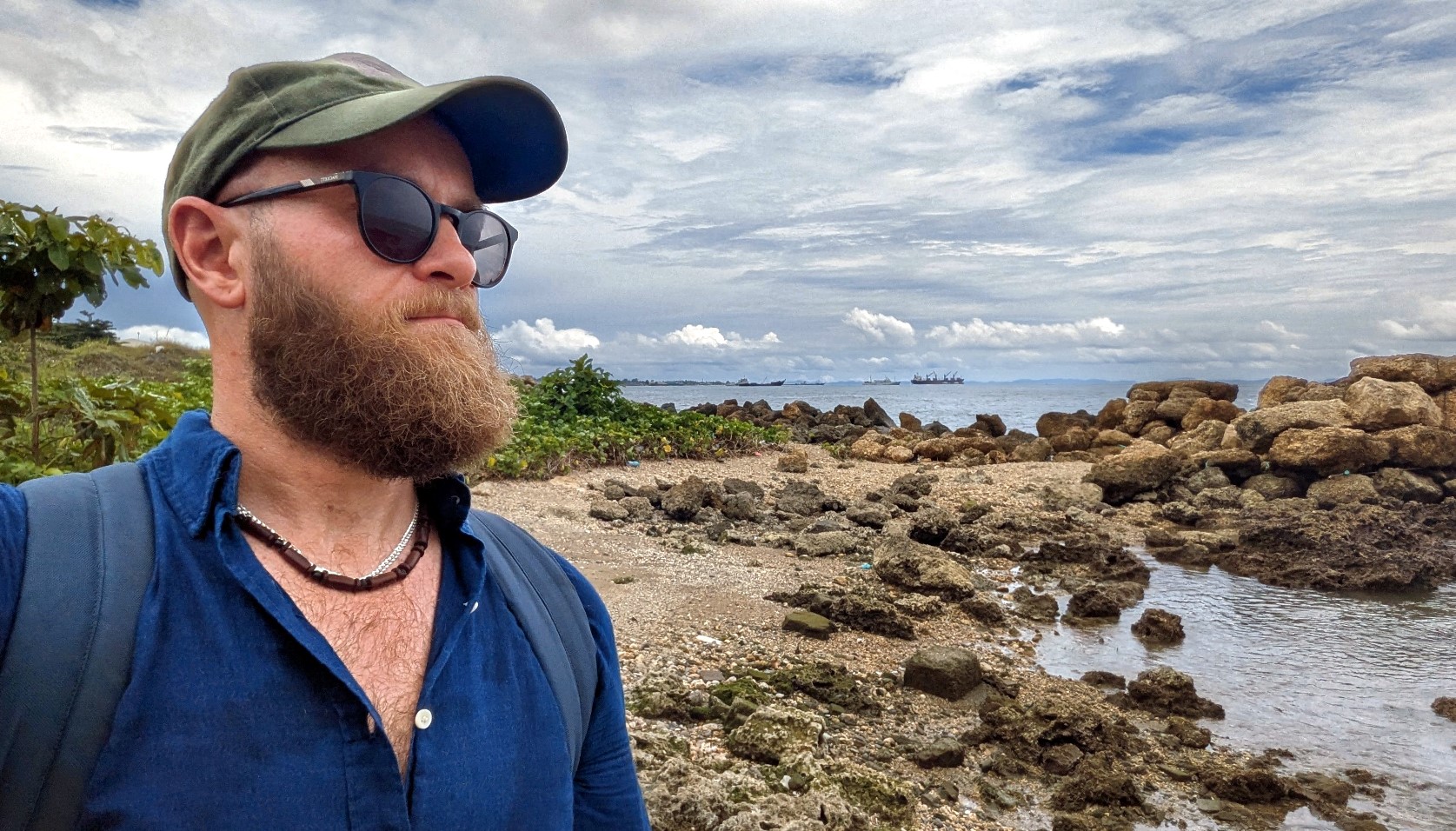
Iron Bottom Sound. This was one of the few locations along the coast where I could access the sea. The concept of coastline for the public good has not yet arrived in the Happy Isles.
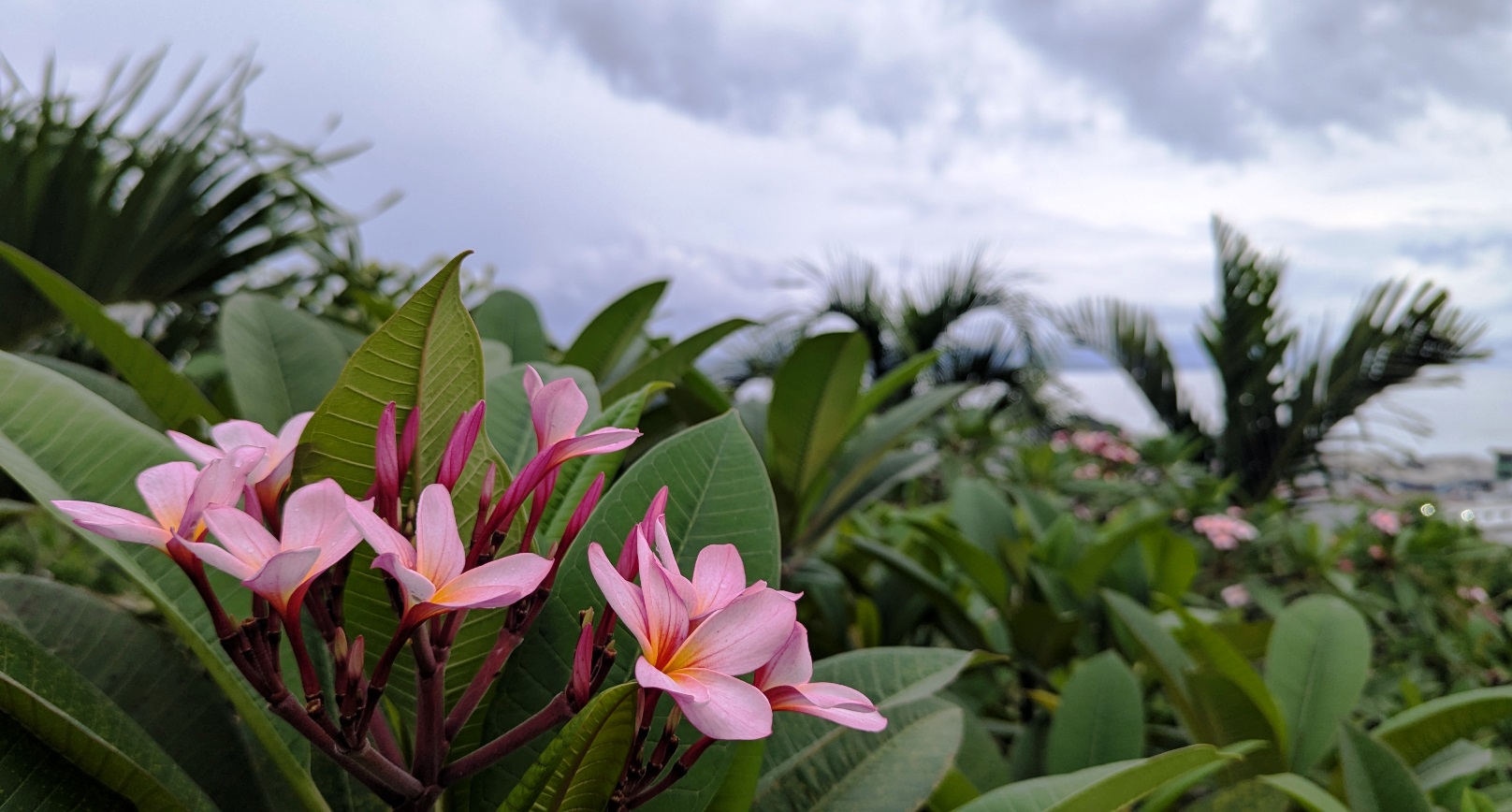
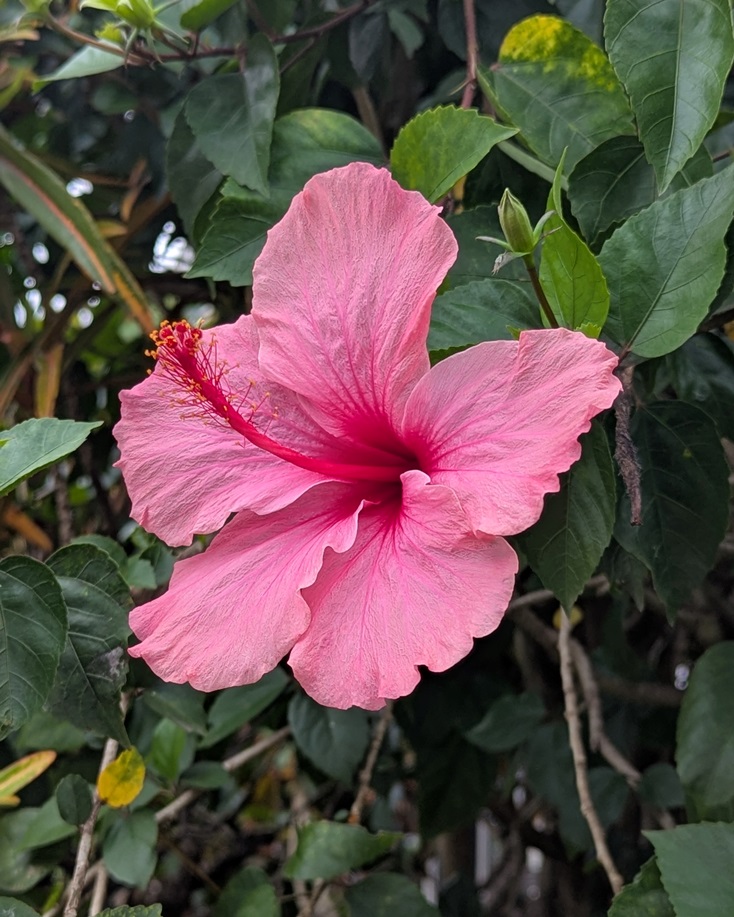
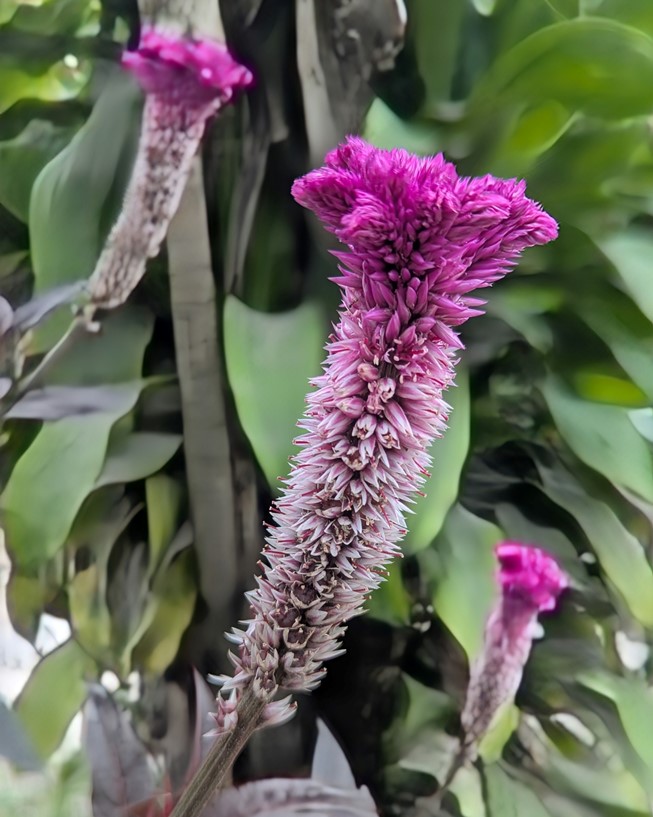

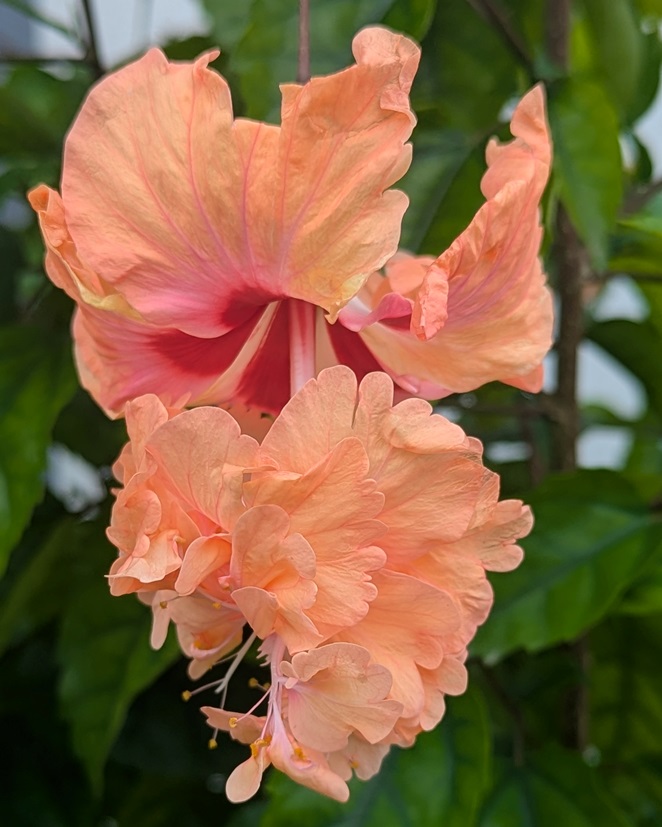
Solomon Islands blooms: amid scenes of poverty and dilapidation these flowers were especially appreciated.
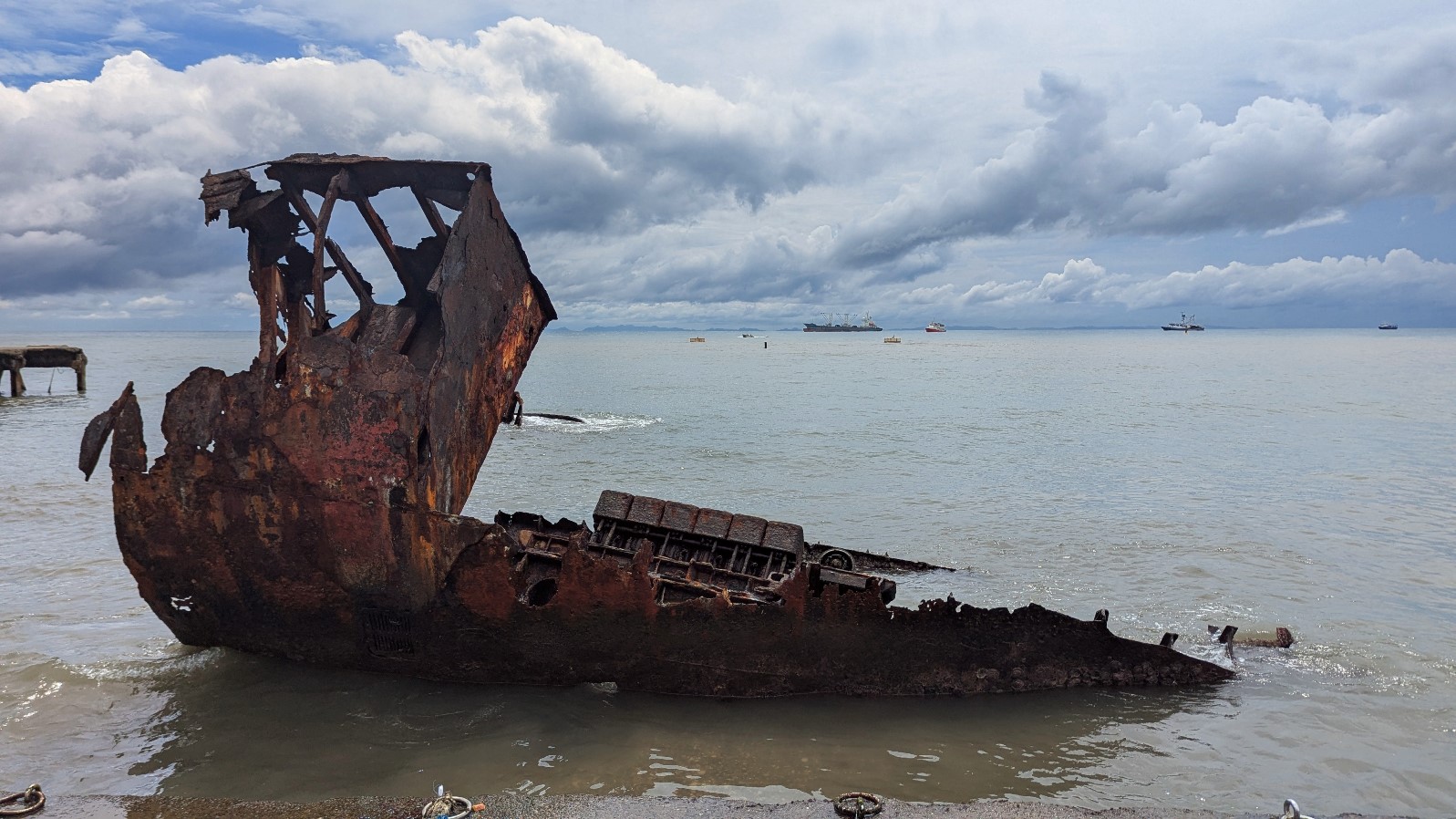
The shipwreck of the MV Yandina in the waters of Iron Bottom Sound.
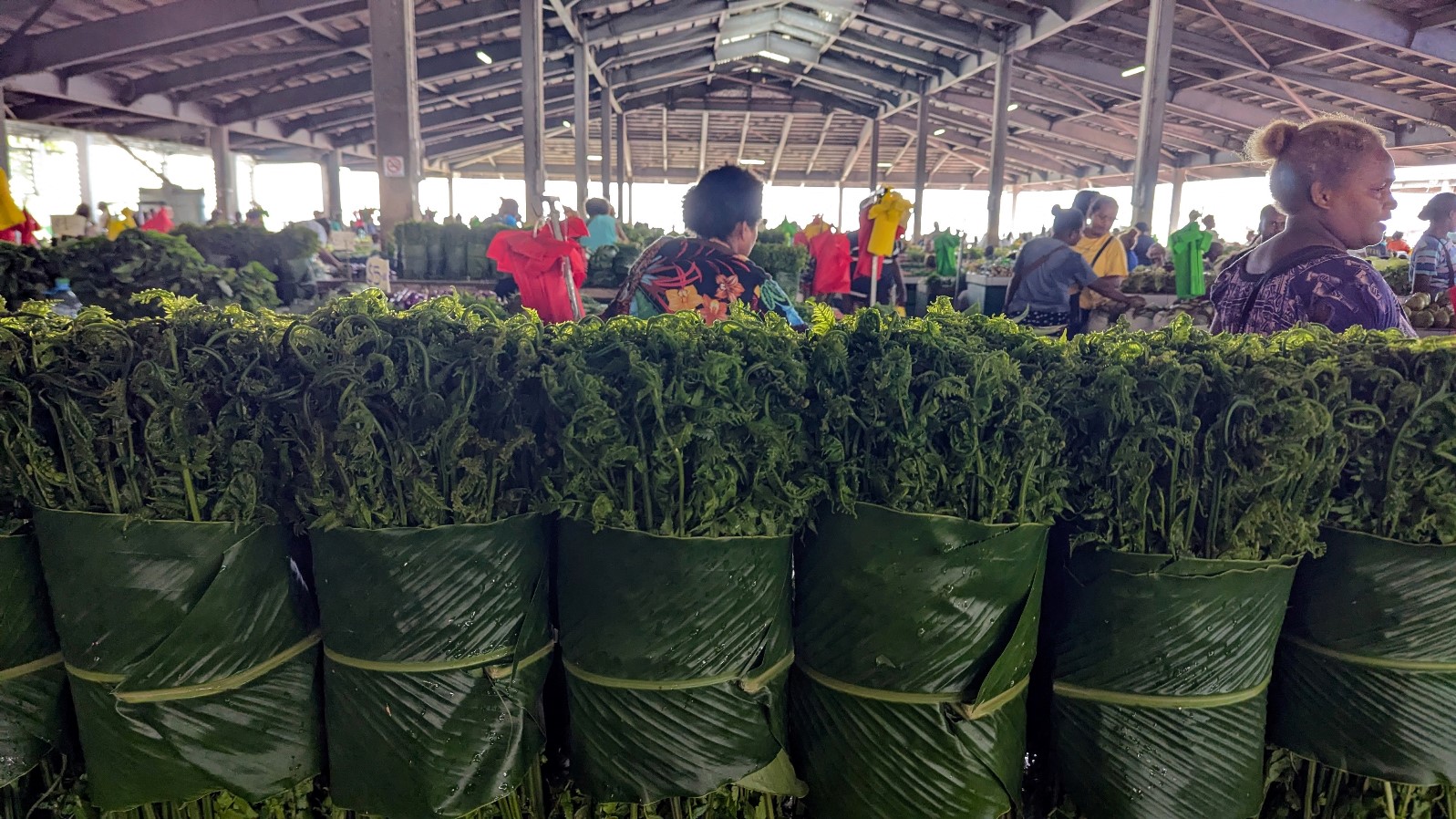
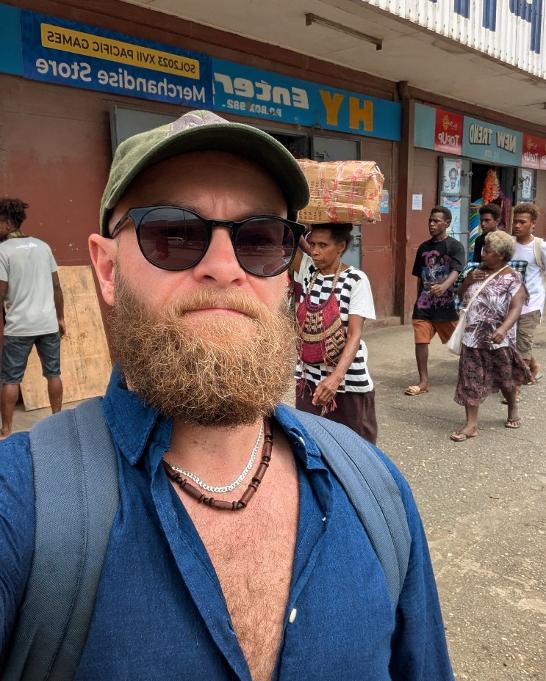
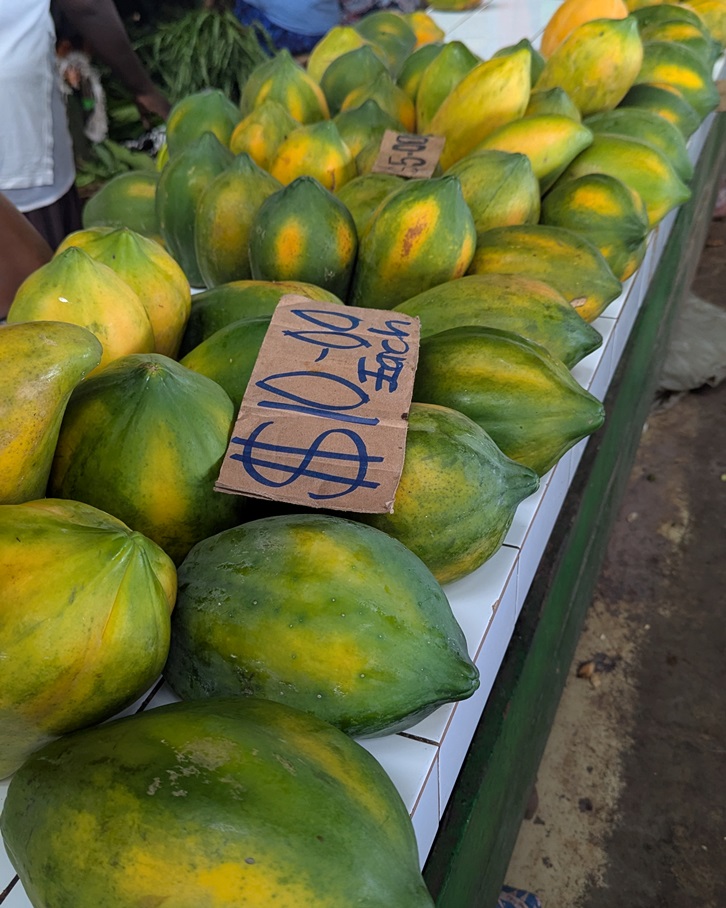
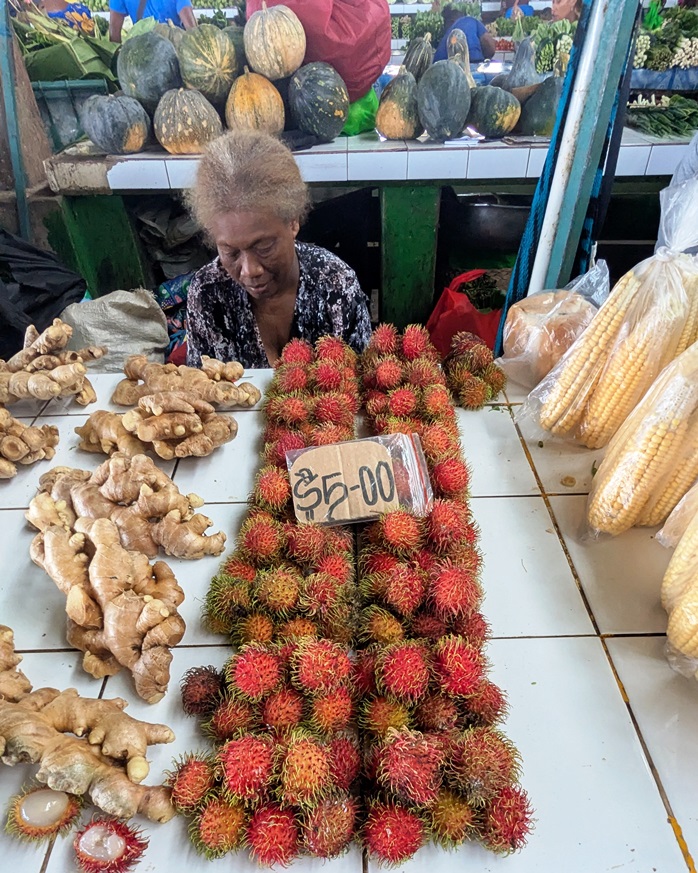
Scenes from the wonderful and vibrant Honiara Central Market.
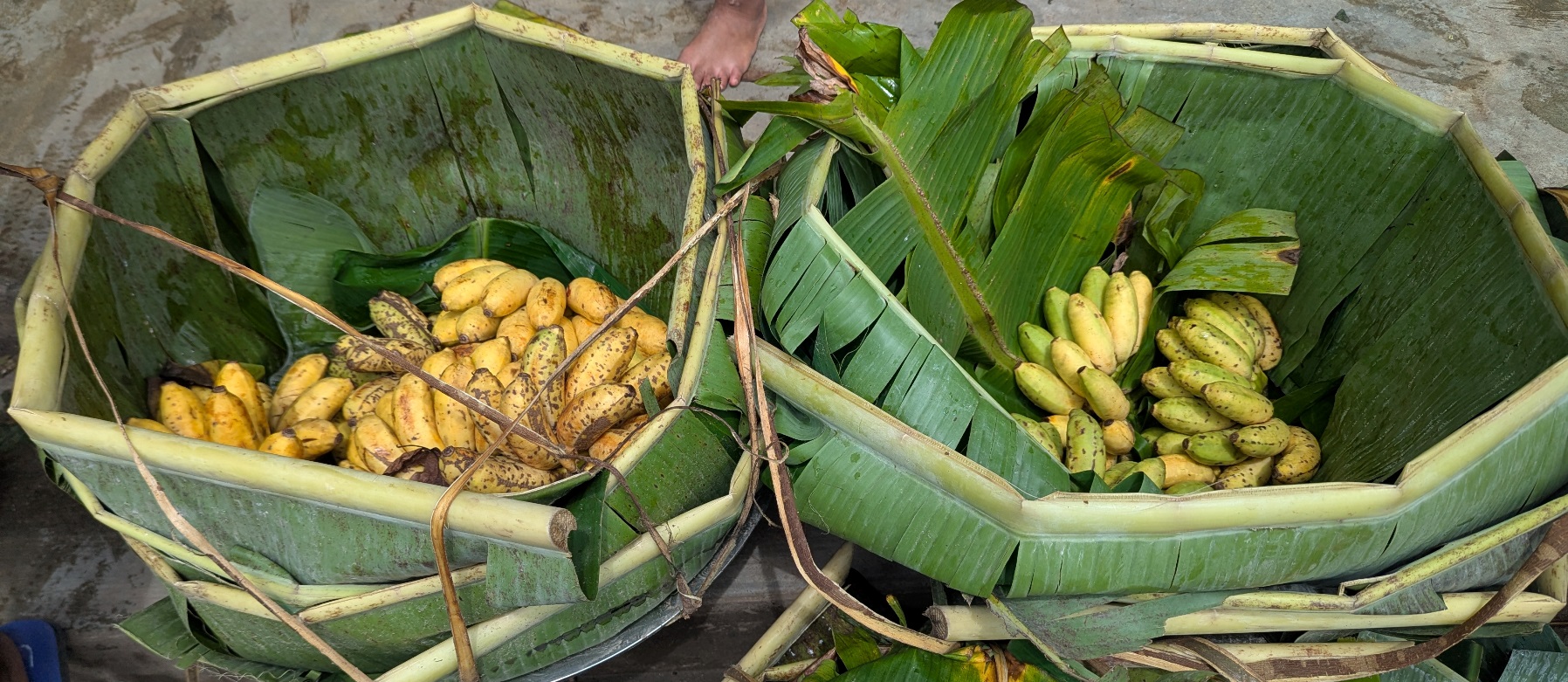
Bananas in baskets made from palm tree leaves. Fresh produce is exquisitely and thoughtfully presented.
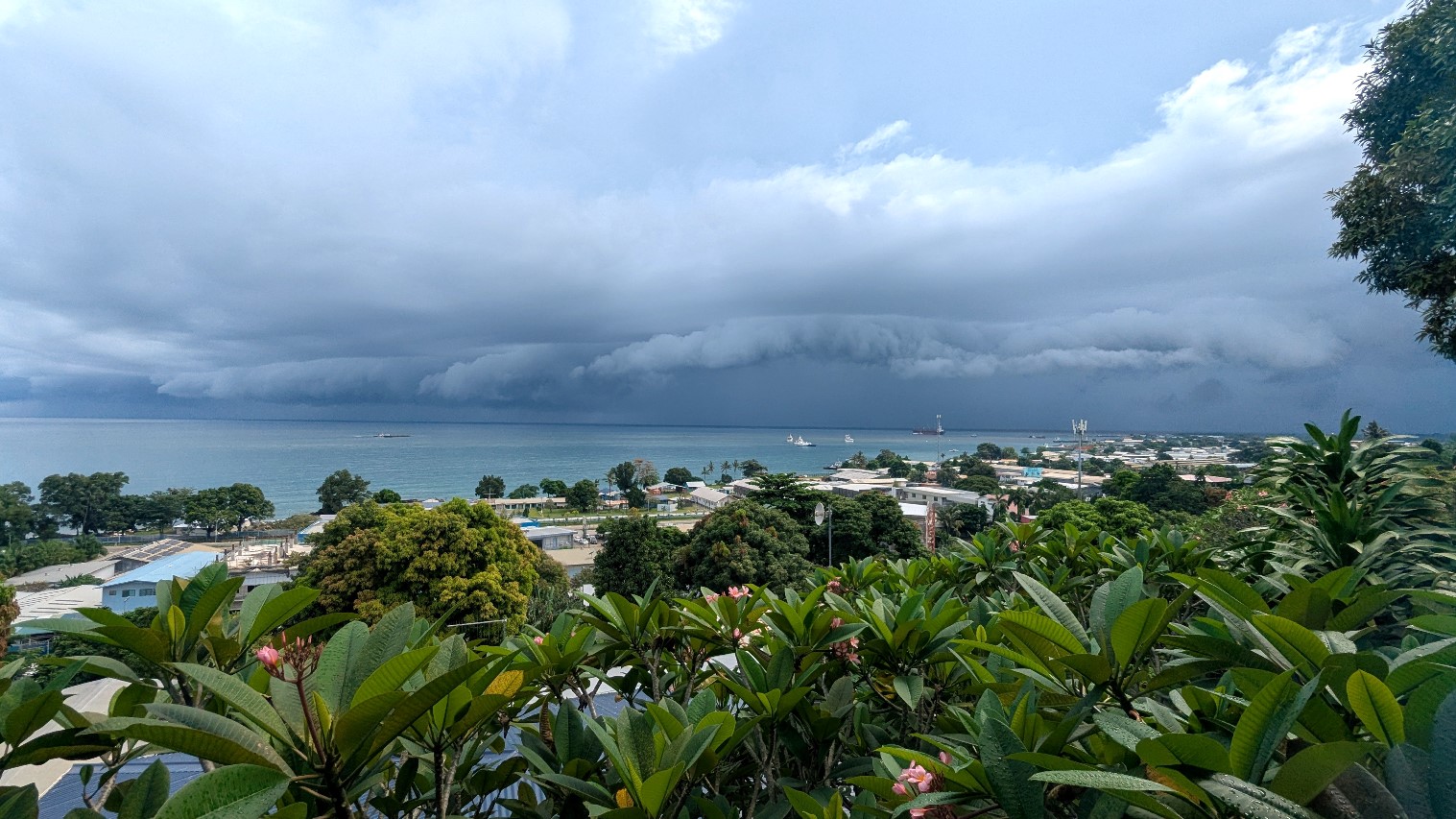
The view from my apartment on Panatina Ridge as another tropical storm rolls in.
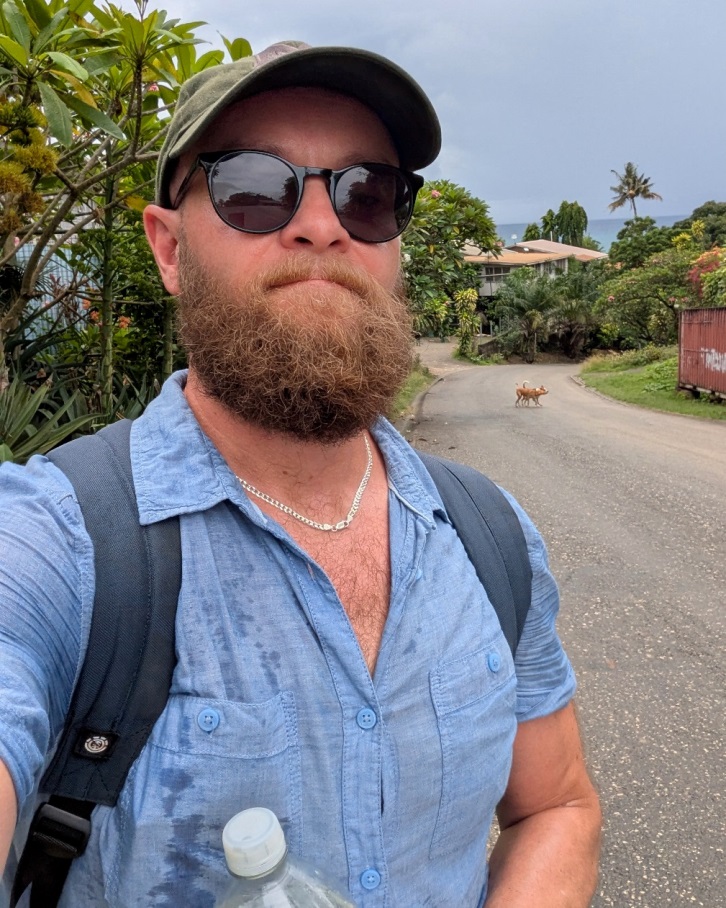

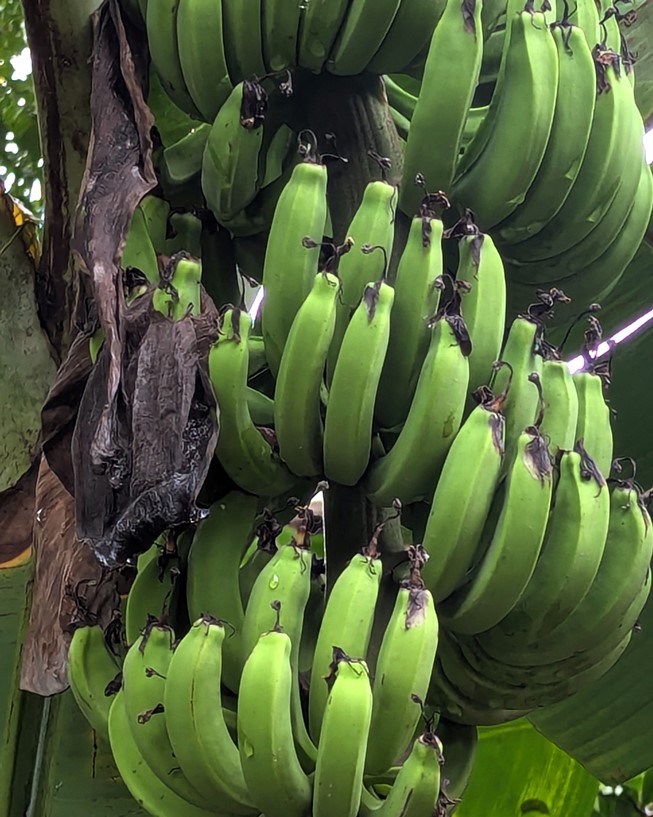
Scenes from east Honiara - my home for the duration of my stay in the Solomon Islands: walking up to Panatina Ridge; a shack made from dried palm leaves; bananas growing by the roadside.
travel tips, links & resources
- Solo travel is a bit daunting, even for the most fearless of travellers. If anything goes wrong you are pretty much on your own. As this was a solo adventure I made sure I packed a comprehensive first aid medical kit which included several rounds of antibiotics. Travelling alone does have a number of advantages: people are far more likely to engage you in conversation and you are also more likely to engage others in the same way.
- Official entry requirements to the Solomon Islands, at time of my visit, included the need to provide evidence of my vaccination against Measles. After a lot of hassle I procured the necessary medical paperwork which I fully expected to be checked upon arrival. Of course, no one asked for it. Better safe than sorry, I guess.
- ATMs are temperamental on the island. On arrival, Honiara Henderson Airport's only ATM rejected my usually reliable bank cards. A second machine I tried later on the same evening was broken. Luckily I had brought some Solomon Islander Dollars with me from Australia, meaning I could still pay for the taxi to my hotel. It would be circumspect to carry at least some local currency with you because infrastructure is, let's say, a little rudimentary.
- Solomon Islanders are a welcoming people. I received many enthusiastic waves, quizzical smiles and good mornings on my walks around the capital. This makes the Solomon Islands a good destination if you're travelling alone like I was. However, in countries where poverty surrounds, where so many have so little, as in the Solomon Islands, I make a conscious effort to 'dress down'. I wear my oldest pair of trainers, my worn and faded travel shorts and a simple top. While so many people were friendly and welcoming of me, it would be foolish to not be cautious. I separated my cash and cards and kept my trips around Honiara to daylight only. Indeed, the UK Foreign Office advice for the Solomon Islands warns travellers of attacks on foreign nationals.
- The Solomon Islands isn't geared up for visitors. Accommodation options are very limited and what is available is expensive. I booked my accommodation four months in advance to make sure I had somewhere acceptable to stay.
- As with many Pacific island countries, things are expensive in the Solomon Islands. Some were near double what I would pay back in Australia. My advice is to bring what you can with you and declare this on your incoming passenger card. Food options in most supermarkets are quite limited and generally of poor quality. However, I did find a good supermarket inside the Panatina Plaza in east Honiara. Many products were imported from Australia and thus the prices were crazy but I was glad of their availability nonetheless.
- I visited in April and therefore towards the end of the wet season. The dry season in the Solomon Islands is the preferred time to visit and is between May and October.
- Public buses in Honiara are plentiful but often full. These are independently run operations but do charge a flat rate set by the authorities. All pay the same price no matter where the bus was boarded.
you may also like
